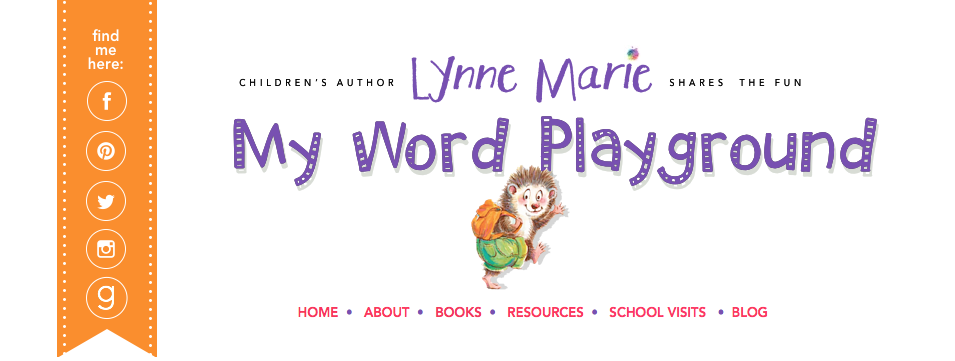 When I read writing blogs, one of my favorite things is to
find is an exercise or activity that is
When I read writing blogs, one of my favorite things is to
find is an exercise or activity that is immediately useful to my writing—something that I can directly apply to my work-in-progress. So as I thought about ideas to share, I hoped to come up with something that was both immediately applicable and something a bit out of the ordinary. That brought me to one-sentence summaries.
One-sentence summaries are often used in query letters or
when pitching your manuscript, but in this case, I’m suggesting that you write
a one-sentence summary while still in the drafting stage or even before you even before you write the first word of a
manuscript.
I have found that if I cannot distill my story down to a
single sentence, I’m not ready to write. Or maybe if I’m drafting or revising a
picture book or a chapter book and I’m running into problems and just can’t get
it to come together, writing a one-sentence summary can provide the direction I
need to solve those issues.
There are lots of different strategies to writing
one-sentence summaries. Over the years, I’ve collected several different
methods. Try them out and see which ones work best for you. And be forewarned,
the seemingly simple little rascals can sometimes be truly frustrating to pin
down! The key is to focus on simplicity while still hitting the required marks,
and resist the urge to include too many details.
Let’s take a look at a few one-sentence summary templates
and some examples:
1) [character’s name] was a ________ who more
than anything wanted ________________ but couldn’t because ___________________,
until _________________ happened.
*Example from Paul Schmid’s picture book HUGS FROM PEARL:
Pearl was a porcupine
who more than anything wanted to give her friends hugs but couldn’t because
she was just too darned prickly, until she devised a creative way to
both protect her friends and to get her much desired hugs.
2) (Character) wants (concrete want) because
(abstract want), but (conflict) stands in the way. [from
novelist Cynthia Lord]
*Example from L. Frank Baum’s THE WIZARD OF OZ:
Dorothy wants to return home to Kansas
because she’s come to realize the importance of family, but her
struggles in the strange land of Oz stand in her way.
3) X is Y until Z:
X = the
character
Y =
World/Circumstances
Z =
Inciting Incident
[from agent John Cusick]
So, X (your
main character) is Y (in the general place, time,
circumstances of the protagonist’s every day life when the novel begins) until Z (the
thing that makes the story a story happens).
*Example from J.K. Rowling’s HARRY POTTER AND THE SORCERER’S
STONE:
Harry is a sad
British boy until he discovers he is a wizard and is whisked away
to Hogwarts, a wizard school.
4) Begin your one sentence summary with the
word “when” and let it lead you to “until” or “but.” When this happens, then
this happens, until this happens.
[This is my personal favorite.]
When a little ol’
southern gal arrives for her first day of kindergarten, her oversized voice
wreaks ten kinds of havoc, but before the day is over, her giant voice comes in
mighty handy.
One-sentence summaries can help us stay on track. They can
help us make sure we’re staying true to our story and not getting lost on too
many tangents. They can also help us identify the core elements of our stories
and help us connect the dots between those elements. And as a bonus, they’re
also great to use in queries, in pitch sessions, or when someone asks, “Hey,
what’s your book about?”
Special thanks to Lynne Marie for inviting me to write this
post!
Katy is the award winning author of more than twenty
children’s books including the picture books Farmer McPeepers and His Missing Milk Cows, illustrated by Steve
Gray (Rising Moon Children’s Books), Loud
Lula, illustrated by Mike Boldt (Two Lions, 2015), and the forthcoming Aliens Get the Sniffles, Too, illustrated
by K.G. Campbell (Candlewick Press, forthcoming 2017).
Many of her books are nonfiction leveled readers written for
educational markets. Katy has also written nonfiction books for older readers
and for many children’s magazines. A full listing of her published credits can
be viewed at http://www.katyduffield.com/BOOKS_files/PublishedCredits-Duffield-1.pdf.
Katy writes from her home in northeast Florida.
If you’re a picture book writer, Katy critiques picture book
manuscripts. For details, please visit the Critiques page on her website.
Visit Katy online at http://www.katyduffield.com
or follow her on Twitter @KatyDuffield.
Katy’s most recently published picture book:
LOUD LULA, illustrated by Mike Boldt. (Two Lions Publishing
2015)
Special *Limited* Offer:
https://www.amazon.com/
Special *Limited* Offer:
https://www.amazon.com/



























Excellent advice!
ReplyDeleteThanks for stopping by My Word Playground, @Rebecca Gomez - hope to have you and your fabulous books over at the playground some day!
DeleteI would love that!
DeleteGreat way to fine tune your focus!
ReplyDeleteGlad to have you here, too, @Andria Rosenbaum. Hope you have you and your books visit one day, too!
DeleteWhat a terrific strategy from Katy. Thanks!!
ReplyDeleteGlad to have you here at My Word Playground, dear Dee -- and one day we'll be promoting you and your books! XOXO
DeleteI love this advice!
ReplyDeleteThanks for stopping by, Heather Ayris Burnell -- just adore you and Sub It Club :) Hope to have you featured here one day, too!
Delete